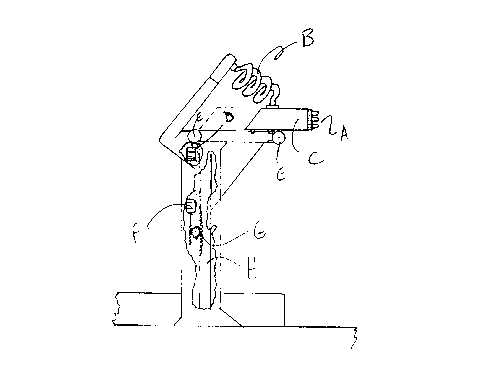Some of the information on this Web page has been provided by external sources. The Government of Canada is not responsible for the accuracy, reliability or currency of the information supplied by external sources. Users wishing to rely upon this information should consult directly with the source of the information. Content provided by external sources is not subject to official languages, privacy and accessibility requirements.
Any discrepancies in the text and image of the Claims and Abstract are due to differing posting times. Text of the Claims and Abstract are posted:
| (12) Patent Application: | (11) CA 2274370 |
|---|---|
| (54) English Title: | CHARGING STATIONS FOR ELECTRIC VEHICLES |
| (54) French Title: | POSTES DE RECHARGE POUR VEHICULES ELECTRIQUES |
| Status: | Deemed Abandoned and Beyond the Period of Reinstatement - Pending Response to Notice of Disregarded Communication |
| (51) International Patent Classification (IPC): |
|
|---|---|
| (72) Inventors : |
|
| (73) Owners : |
|
| (71) Applicants : |
|
| (74) Agent: | |
| (74) Associate agent: | |
| (45) Issued: | |
| (22) Filed Date: | 1999-05-31 |
| (41) Open to Public Inspection: | 2000-11-30 |
| Availability of licence: | N/A |
| Dedicated to the Public: | N/A |
| (25) Language of filing: | English |
| Patent Cooperation Treaty (PCT): | No |
|---|
| (30) Application Priority Data: | None |
|---|
The main reason of the lack of success of EV projects was the
unability of the vehicle to get back in motion before those
long hours of recharging after their batteries have drained
out. This invention of mine is a modest try to encourage the
auto makers to make a move towards building pollution free
vehicles and gradually retire the internal combustion engine
ones.
Note: Claims are shown in the official language in which they were submitted.
Note: Descriptions are shown in the official language in which they were submitted.

2024-08-01:As part of the Next Generation Patents (NGP) transition, the Canadian Patents Database (CPD) now contains a more detailed Event History, which replicates the Event Log of our new back-office solution.
Please note that "Inactive:" events refers to events no longer in use in our new back-office solution.
For a clearer understanding of the status of the application/patent presented on this page, the site Disclaimer , as well as the definitions for Patent , Event History , Maintenance Fee and Payment History should be consulted.
| Description | Date |
|---|---|
| Inactive: IPC deactivated | 2021-10-09 |
| Inactive: IPC deactivated | 2020-02-15 |
| Inactive: First IPC assigned | 2019-02-15 |
| Inactive: IPC assigned | 2019-02-15 |
| Inactive: IPC expired | 2019-01-01 |
| Inactive: IPC expired | 2019-01-01 |
| Time Limit for Reversal Expired | 2003-06-02 |
| Application Not Reinstated by Deadline | 2003-06-02 |
| Inactive: Adhoc Request Documented | 2003-03-04 |
| Deemed Abandoned - Failure to Respond to Maintenance Fee Notice | 2002-05-31 |
| Application Published (Open to Public Inspection) | 2000-11-30 |
| Inactive: Cover page published | 2000-11-29 |
| Inactive: Office letter | 2000-10-02 |
| Change of Address Requirements Determined Compliant | 2000-07-14 |
| Inactive: Office letter | 2000-07-14 |
| Inactive: First IPC assigned | 1999-07-30 |
| Inactive: IPC assigned | 1999-07-30 |
| Inactive: Office letter | 1999-07-27 |
| Inactive: Filing certificate - No RFE (English) | 1999-07-26 |
| Application Received - Regular National | 1999-07-15 |
| Abandonment Date | Reason | Reinstatement Date |
|---|---|---|
| 2002-05-31 |
The last payment was received on 2001-05-30
Note : If the full payment has not been received on or before the date indicated, a further fee may be required which may be one of the following
Patent fees are adjusted on the 1st of January every year. The amounts above are the current amounts if received by December 31 of the current year.
Please refer to the CIPO
Patent Fees
web page to see all current fee amounts.
| Fee Type | Anniversary Year | Due Date | Paid Date |
|---|---|---|---|
| Application fee - small | 1999-05-31 | ||
| MF (application, 2nd anniv.) - small | 02 | 2001-05-31 | 2001-05-30 |
Note: Records showing the ownership history in alphabetical order.
| Current Owners on Record |
|---|
| GLAUCIO ROBERTO DE PASCHOAL |
| Past Owners on Record |
|---|
| None |